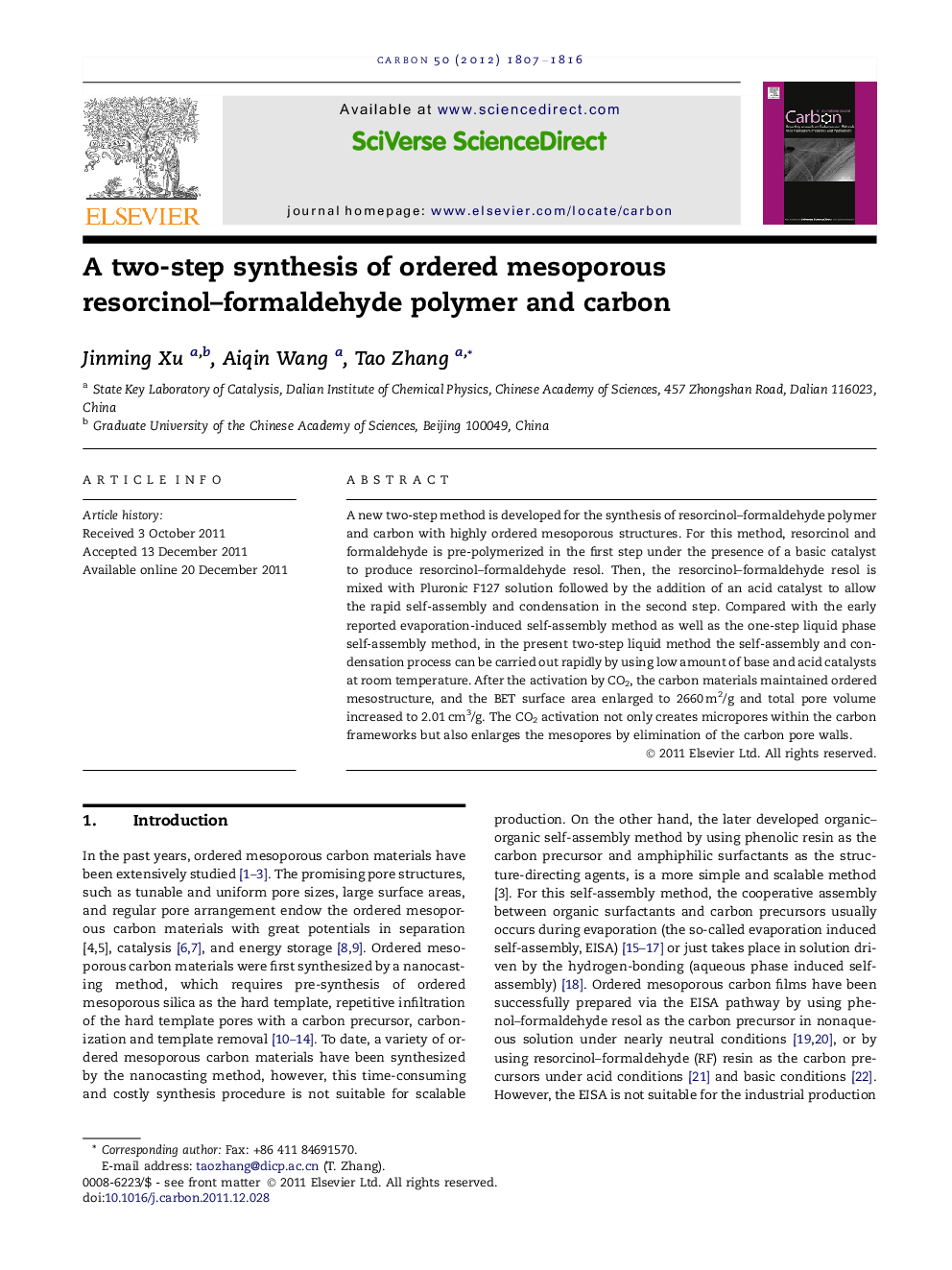| Article ID | Journal | Published Year | Pages | File Type |
|---|---|---|---|---|
| 1415646 | Carbon | 2012 | 10 Pages |
A new two-step method is developed for the synthesis of resorcinol–formaldehyde polymer and carbon with highly ordered mesoporous structures. For this method, resorcinol and formaldehyde is pre-polymerized in the first step under the presence of a basic catalyst to produce resorcinol–formaldehyde resol. Then, the resorcinol–formaldehyde resol is mixed with Pluronic F127 solution followed by the addition of an acid catalyst to allow the rapid self-assembly and condensation in the second step. Compared with the early reported evaporation-induced self-assembly method as well as the one-step liquid phase self-assembly method, in the present two-step liquid method the self-assembly and condensation process can be carried out rapidly by using low amount of base and acid catalysts at room temperature. After the activation by CO2, the carbon materials maintained ordered mesostructure, and the BET surface area enlarged to 2660 m2/g and total pore volume increased to 2.01 cm3/g. The CO2 activation not only creates micropores within the carbon frameworks but also enlarges the mesopores by elimination of the carbon pore walls.
